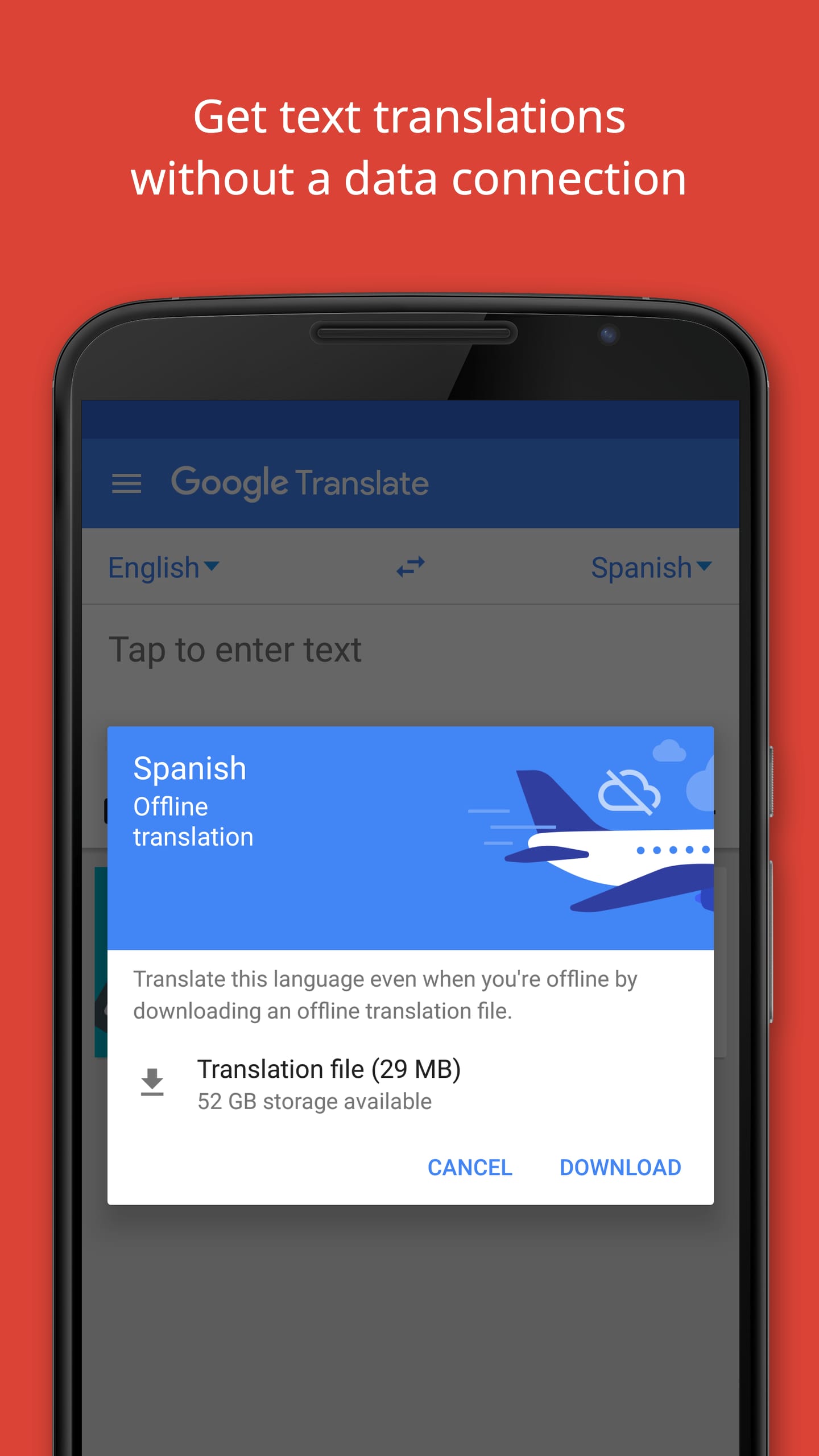Google Translate
The Google Translate app is a powerful tool that breaks down language barriers and enables seamless communication across different languages. With its advanced translation technology and user-friendly interface, the app has become an indispensable companion for travelers, language learners, and anyone in need of quick and accurate translations. By harnessing the power of machine learning and artificial intelligence, Google Translate facilitates global communication and fosters cultural understanding. Let’s dive into the key features and benefits that make the Google Translate app a game-changer in the world of language translation.
 Google Translate |
|
| Rating: 4.3 | |
| Downloads: 1,000,000,000+ | |
| Category: Tools | |
| Developer: Google LLC |
Features & Benefits
- Text Translation: The primary feature of the Google Translate app is its ability to translate text from one language to another. Whether it’s a phrase, sentence, or an entire document, users can simply type or paste the text into the app and select the desired target language. The app provides accurate translations in real-time, making it a valuable tool for travelers, students, and professionals.
- Camera Translation: The camera translation feature allows users to translate text from images or physical documents. Simply point your camera at the text, and the app will overlay the translated text on the screen. This feature is particularly useful when encountering signs, menus, or documents in a foreign language, enabling instant understanding without the need for manual typing.
- Voice Translation: With the voice translation feature, users can speak or dictate phrases in their native language, and the app will translate and vocalize the translation in the desired target language. This feature is ideal for conversations and real-time communication, allowing users to bridge language gaps and interact with people from different linguistic backgrounds.
- Offline Translation: The Google Translate app offers offline translation capabilities, allowing users to access translations even when they don’t have an internet connection. Users can download specific language packs in advance, ensuring that they have access to translations even in remote areas or when traveling abroad without data connectivity.
- Conversation Mode: The conversation mode feature enables users to have bilingual conversations in real-time. Simply select the languages spoken by each participant, and the app will provide translations as the conversation progresses. This feature is immensely helpful for travelers, facilitating communication with locals and enabling a richer cultural experience.
Pros
- Wide Language Support: The Google Translate app supports a vast number of languages, making it accessible and valuable for users across the globe.
- Accurate Translations: Thanks to Google’s advanced machine learning algorithms, the app provides accurate translations that are constantly improving with time.
- User-Friendly Interface: The app’s intuitive and user-friendly interface makes it easy to navigate and use, even for those with limited technical expertise.
- Additional Features: Beyond translation, the app offers a range of additional features, such as phrasebook, handwriting recognition, and pronunciation guides, enhancing its utility for users.
- Continual Updates: Google consistently updates the app, introducing new features and improvements to enhance the user experience and provide more accurate translations.
Cons
- Dependence on Internet Connectivity: While the offline translation feature is available, the full functionality of the app relies on an active internet connection.
- Complex Translations: The accuracy of translations may vary depending on the complexity of the text or the nuances of certain languages. Users should exercise caution when dealing with critical or sensitive translations.
- Limited Contextual Understanding: The app may struggle with capturing the full context of a sentence or phrase, leading to occasional inaccuracies or misinterpretations.
- Speech Recognition Challenges: Voice translation accuracy can be affected by accent variations, background noise, or regional dialects, resulting in potential errors or misunderstandings.
- Privacy Considerations: As with any translation app that processes user data, privacy concerns may arise. Users should review and understand the app’s privacy policies and settings to ensure their data is handled appropriately.
Apps Like Google Translate
- Microsoft Translator: Microsoft Translator is a popular alternative to the Google Translate app. It offers similar features such as text translation, voice translation, and camera translation. Additionally, it integrates with other Microsoft products and services, providing seamless translation across devices and platforms.
- iTranslate: iTranslate is another widely used translation app that offers a range of features, including text translation, voice translation, and offline translation. It also includes a dictionary and phrasebook, making it a comprehensive tool for language learners and travelers.
- Papago: Developed by Naver, Papago is a translation app that specializes in Asian languages. It supports translation between Korean, English, Japanese, Chinese, and other languages. With its accurate translations and intuitive interface, Papago is a popular choice among users in Asian countries.
While these apps offer similar functionalities to the Google Translate app, each has its own unique features and strengths. Users can explore these alternatives to find the one that best suits their specific translation needs and preferences.
Screenshots
 |
 |
 |
 |
Conclusion
The Google Translate app has revolutionized language translation and bridged communication gaps across the globe. Its powerful features, such as text translation, camera translation, voice translation, offline translation, and conversation mode, provide users with a versatile and reliable tool for overcoming language barriers. While the app offers numerous benefits, users should be aware of its limitations, such as the dependence on internet connectivity, potential complexities in translations, and privacy considerations. By leveraging the capabilities of artificial intelligence and machine learning, the Google Translate app continues to evolve and improve, empowering users to connect and communicate effortlessly in a multilingual world.


